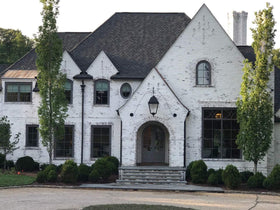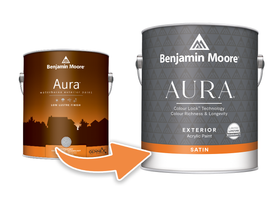How To Hang Wallpaper
Before you can learn how to hang wallpaper you’ll need to gather some supplies.
Things You’ll Need
- Dynamic wallpaper paste
- Measuring tape
- Paste brush
- Pins
- Rags
- Richard seam roller
- Smoothing sponge
- Putty knife
- Olfa utility knife
- Sponges
- Scissors
- Pencil
- Level
- Drywall tools for patching
- A friend
Preparing the Walls
1. Look for cracks, nail holes and loose paint or plaster on the walls. Fix them first using a filler like Dyna Patch.
2. Be sure that the walls are clean and dry and that every surface is either painted or primed using Circa 1850 Wallpaper Prep-Coat. You don’t want to apply paste to a surface that will just absorb it – the paper might not stick.
3. Remove all the electrical plates after you’ve washed the walls.
4. Plan to start papering in a place that is inconspicuous, and remember that your starting point will also be your ending point. (Corners and the areas behind opening doors are good places to start.)
5. Beginning at a doorway or corner, measure a distance that’s an inch or two shorter than the width of your paper. Make a mark at this distance – be sure to make the mark as light as possible so that it won’t show through the paper’s background.
6. Using a carpenter’s level and a pencil, draw a vertical line from the floor to the ceiling through the mark. If you start at a corner, be sure to use the level – not the corner – as your guide. You will align your paper to this line – again, be sure to make the mark as light as possible.
Hanging the Wallpaper
1. With an Olfa utility knife, cut a length of paper that’s about 4 inches longer than the wall, from ceiling to baseboard. (With a large repeating pattern, you might have to cut the strips longer to make sure the pattern matches up from piece to piece.)
2. Apply paste to the paper, or to the wall depending on wallpaper manufacturer’s specification. We suggest Dynamics heavy Duty Clear Adhesive, or mix your own Metylan. If you’re using pre-pasted wallpaper, follow the manufacturer’s instructions. (Most professional installers apply paste even to pre-pasted wallpapers; be aware that this voids some manufacturers’ warranties.)
3. Starting at the ceiling, align the paper with the plumb line you drew on the wall. Roughly 2 extra inches should flop against the ceiling, and 2 inches more should flop below the top of the baseboard.
4. Smooth the paper using a smoothing brush or a plastic smoother, which looks like a wide spatula without the handle. Remove any wrinkles by pulling a section of the paper away from the wall until you reach the wrinkle. Smooth out the paper as you lay it back against the wall.
5. Smooth from the middle out, applying enough pressure to push out the bubbles but not pressing so hard that you stretch or tear the paper. If you have an air bubble that just won’t budge, poke it with a pin and press down on the paper before the adhesive dries.
6. Trim the paper. Using a wide putty knife, press the paper against the ceiling, baseboard, or corner and trim it with a sharp razor blade. (The putty knife provides a straight edge to guide the blade.)
7. Continue with the next piece, aligning it with the one you just laid down. If a pattern just won’t line up between two strips, match it at the most obvious spot – eye level.
8. Roll each seam with a Richard seam roller. Don’t press so hard that you squeeze out all the adhesive. Go back 10 or 15 minutes later and roll each seam again.
9. When you reach the end – the place where you started – you’ll want to create a clean final seam. Lap the final strip of paper over the first strip and trim both simultaneously.
10. Be sure to wipe any excess adhesive off the paper, ceiling, baseboards and adjoining strips. Use a wet sponge followed by a dry rag.
*After removing electrical cover plates, you’ll be wallpapering right over exposed electrical outlets and switches. Be sure to turn off the electricity to the room before cutting around these fixtures. Water, electricity and metal are a dangerous combination.
*Place pieces of tape over the outlets and switches to minimize their exposure to paste and water. But remember, the tape won’t protect you in any way if the electricity is still on.
*Search the internet for videos on how to hang wallpaper. It is always easier after watching someone else demonstrate all the tips and tricks.
*adapted from ehow.com
This how to hang wallpaper information has been presented by your Toronto wallpaper store. If you’re in need of wallpaper you can always visit your downtown Toronto Benjamin Moore paint & wallpaper store Primetime Paint & Paper.



